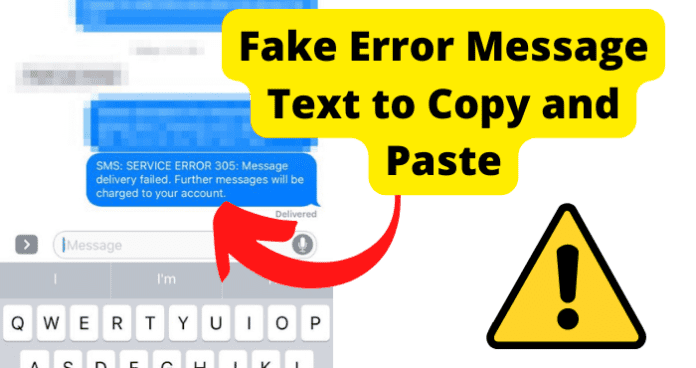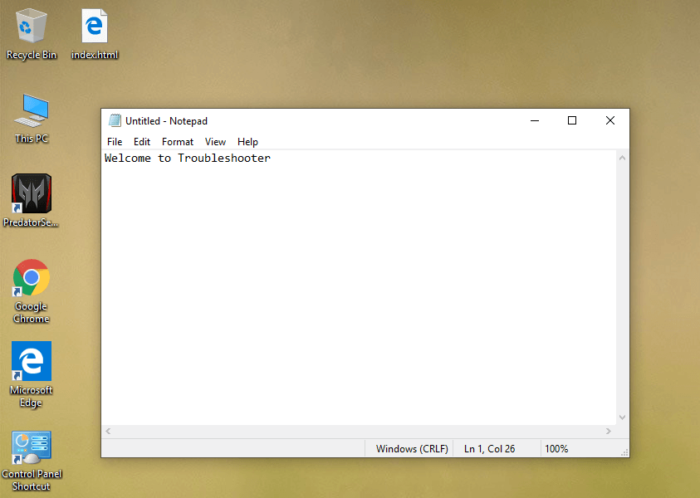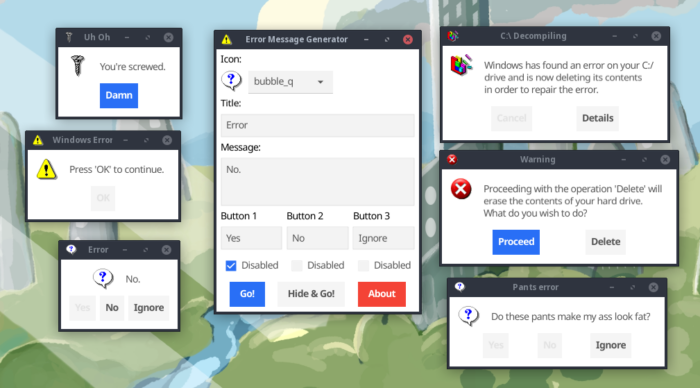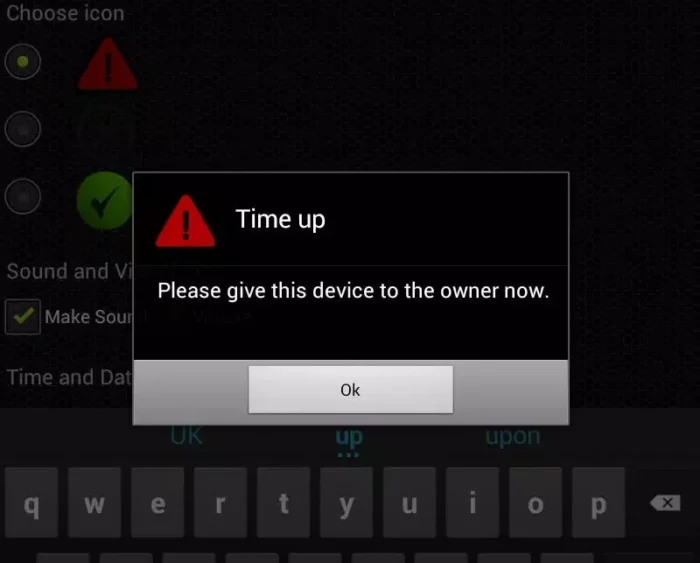Fake error message text copy and paste – the phrase can seem puzzling, leaving you scratching your head and asking, what on earth does this mean? Fear not! By the end of this article, you will not only understand what it refers to but also have a comprehensive understanding of how to use it to your advantage, whether for harmless pranks or deterring annoying spam.
KEY INSIGHTS
- Understand what “fake error message text copy and paste” means.
- Gain knowledge on when and how these messages are utilized.
- Learn the most effective strategies to create these messages.
- Explore preventive measures against malicious usage of these messages.
- Unearth answers to frequently asked questions on this topic.
What’s the Optimal Outcome Without the Fake Error Message Text Copy and Paste Problem?
An ideal world without fake error messages would be free from misunderstandings or miscommunications due to hoax messages. This could result in lessened anxiety over technical glitches that are, in reality, pranks. Additionally, there would be a reduced risk of misuse by malicious actors who may create false error messages with harmful intentions.

Case Study: When Does the Fake Error Message Text Copy and Paste Error Happen?
Let’s consider a practical scenario – you’ve been receiving unsolicited text messages from an unknown number. Instead of confronting the sender or blocking the number, you decide to employ a “fake error message text copy and paste” technique to lead them to believe their messages are not being delivered.

Initial Diagnosis: Have You Tested These Measures?
Before you resort to creating a fake error message, consider:
- Communicating with the sender: If you’re receiving unwanted texts from a known contact, speaking about it might solve the problem.
- Blocking the number: This is a surefire way to stop receiving messages from a specific number.
The Significance of Rectifying Fake Error Message Text Copy and Paste:
Understanding and managing “fake error message text copy and paste” can help you safeguard your digital environment. It can also serve as an effective strategy against unsolicited messages or calls, providing you with a unique way to tackle such issues.
Interactive Guide: 5 Functional Strategies to Address Fake Error Message Text Copy and Paste:
SOLUTION 1: Creating Fake Error Message Using Notepad
To create a fake error message using Notepad:
- Open Notepad on your computer.
- Copy and paste this code: `x=msgbox(“Your Text Here”, Button+Icon, “Error Title”)`
- Replace “Your Text Here” with your desired error message and “Error Title” with your chosen title.
- Save the file with “.vbs” extension.
- When the file is clicked, it will display your fake error message.
SOLUTION 2: Using Online Fake Error Message Generator
Numerous websites allow you to generate fake error messages:
- Visit a site such as Atom Smasher’s Error Message Generator.
- Fill in the appropriate fields to customize your message.
- Download or screenshot the resulting image.
SOLUTION 3: Using Mobile Applications
You can utilize mobile applications like “Fake Error Message” on Android devices:
- Download and install the app.
- Customize your error message and settings.
- Save and use as needed.
SOLUTION 4: Creating a Blocked Text Message
To deter unwanted texts, mimic a blocked message. For instance, you can send a response like: “SMS MSG: 1051: The recipient you are trying to reach is unavailable.”
SOLUTION 5: Reach out to Support
If you encounter a suspected fake error message and can’t resolve the issue, contacting support for the specific platform or service might help. They can verify if the message is genuine and guide you further.

Final Thoughts
Fake error messages are a great way to have some fun, but it’s important to remember the ethics of using them. Misleading someone into thinking their computer or phone is in serious danger can cause undue stress and may lead to unnecessary expenses if they seek professional help to resolve the issue. When used responsibly and with the right intentions, fake error messages can make for an interesting and harmless prank.
Remember to take precautions when using these messages and understand the potential consequences of misuse. But don’t let this discourage you from enjoying a little tech humor! A fake error message prank, when executed well, can provide a good laugh and serve as a friendly reminder that not all glitches are cause for alarm.
The creation and dissemination of fake error messages for entertainment purposes is a fascinating aspect of digital culture. Just remember to be responsible, considerate, and aware of the consequences, and you’ll be sure to have a lot of fun along the way!
FAQs About Fake Error Message Text Copy and Paste
Can I create a fake error message on any device?
Yes, creating fake error messages isn’t limited to a particular operating system or device. There are various websites and applications available for Windows, MacOS, Android, and iOS platforms that can generate fake error messages.
Can fake error messages cause harm to my computer or smartphone?
Typically, creating or receiving a fake error message is harmless as it doesn’t alter any system settings or introduce malicious software. However, you should avoid clicking on suspicious links from unknown sources in fake error messages, as these might lead to harmful websites or downloads.
Is it legal to send fake error messages?
While it’s not illegal to send fake error messages, using them to cause distress, for fraudulent activities, or to intentionally mislead someone could potentially result in legal consequences. Therefore, fake error messages should only be used responsibly, and preferably for entertainment purposes only.
Are there apps for sending fake error messages?
Yes, various applications allow you to generate and send fake error messages. However, it’s important to use these applications responsibly and ethically.
What should I do if I receive a fake error message?
If you suspect you’ve received a fake error message, don’t panic. It’s recommended to ignore the message, especially if it comes from an unknown source. Never click on any suspicious links and don’t provide any personal or financial information.
How can I differentiate between a real and a fake error message?
Real error messages usually follow a certain syntax and have specific codes attached to them. Also, they appear in system dialog boxes, not through text messages or emails. If you’re unsure, do a quick internet search of the error message or consult with a tech-savvy friend.



